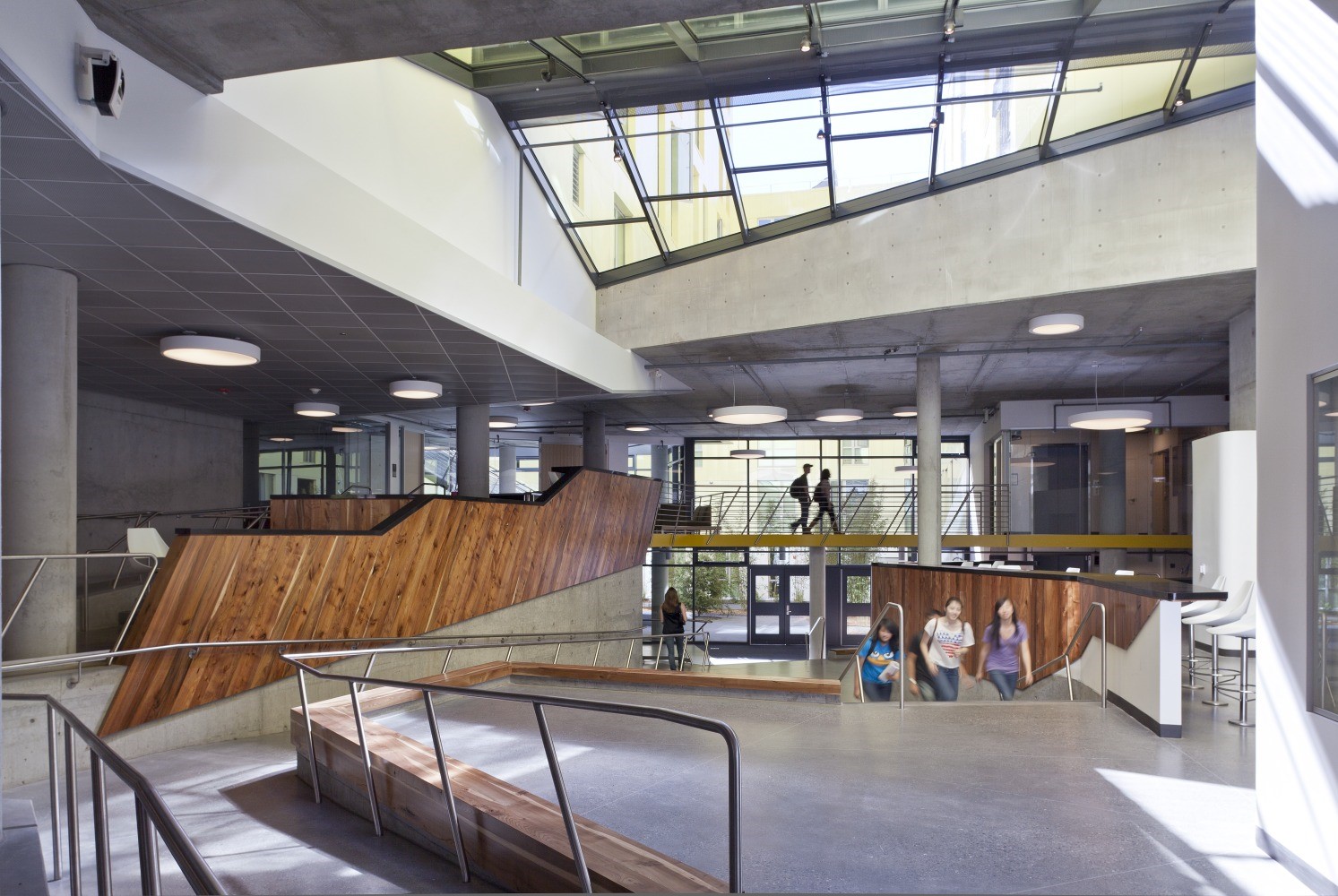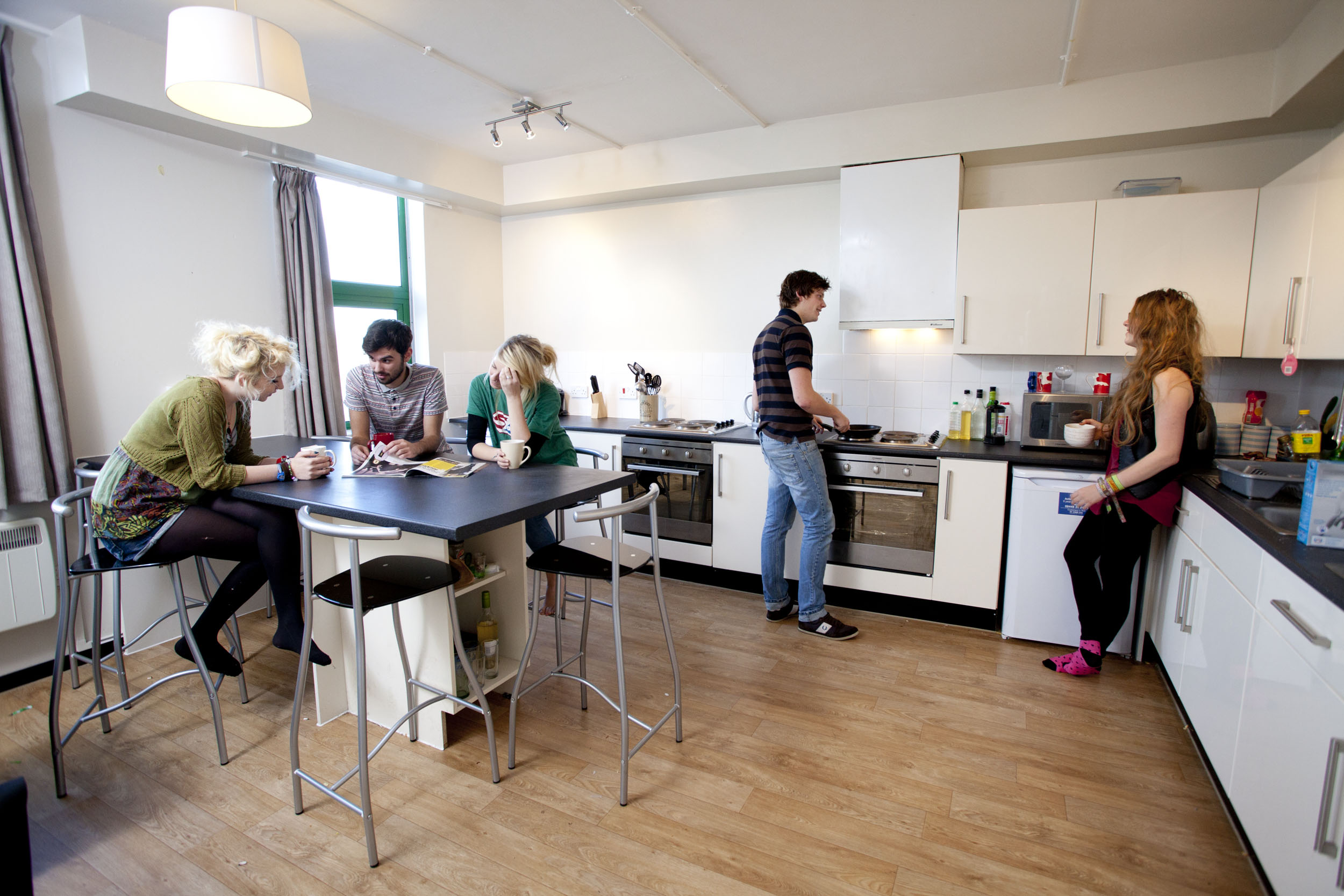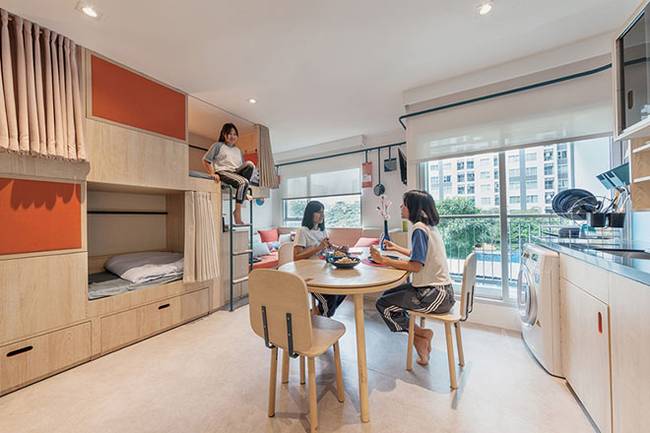The Design Evolution of Student Housing Beyond COVID-19

I first heard the phrase “Alone Together” from a UC San Diego student last year on a panel at a Higher-Education-focused design conference, well-before any whispers of the forthcoming pandemic. She invoked the idea in response to a question we Architects ask clients on every project, “What do you want from your communal spaces?” The student spoke about “Alone together” within the context of design goals, describing students’ desires for flexible spaces where they could study or lounge, see, and be seen to feel connected while also being productive. Of course, #AloneTogether has recently evolved into a very different and unifying meaning for the entire world, but the trend of such flexible spaces is more relevant than ever. When students return to campuses, such spaces can help them feel connected in a new world of social distancing and offer administrators adaptability for future preparedness. As COVID-19 responses change the world around us, and institutions strategize how to embrace a new normal, we can consider several such recent Higher Education design trends that might also help students reclaim their campus community and student life.
Smaller and Virtual Classrooms
Institutions were already thinking about and planning for longer-term shifts to virtual instruction. Now, that timing has been dramatically accelerated. A recent Cornell study noted a switch to teaching large lecture courses online and teaching smaller seminars face-to-face “would not appreciably reduce the interconnectedness of students.” (1) Housing could easily adapt bedroom or study spaces into Zoom conference rooms, which could flexibly support several students taking the same virtual classes or forming study groups to boost the feeling of a learning community. Just as many of us are feeling exhausted by workdays packed with video meetings, students experience similar fatigue, and they’ll need to rely on each other through in-person networks for recovery and support (2).
Communal Kitchens in Student Housing
UC Berkeley Vice Chancellor and CFO Rosemarie Rae believe that “Communal kitchens are the plan for the future,” in part due to data collected last year showing students’ apartment-style kitchens were only being used 5% to 20% of the time (3). Communal kitchens might be re-sized for group-quarantine and pandemic recovery too. We can anticipate an aversion to mass-group dining halls to continue in the near future. Kitchens that can serve multiple students not only improve individuals’ sense of self-reliance and resilience but also strengthen their immediate network of roommates and neighbors when engaging in a family-style cooking experience.
Daylighting and Venting
In many post-occupancy studies about the attributes that contribute to preferred social and study environments, access to views, daylighting, and the outdoors consistently rise as the most important features. Access to both has long been favored by designers encouraging wellness in interior environments; now, during quarantine and for potential future sheltering, they are more critical than ever. Exterior air venting and circulation is not only a sustainable design strategy; it now helps to implement CDC recommendations that we better ventilate and significantly reduce the recycled air of our interior environments. (4)
Increased Unit Density
In response to our affordable-housing crisis, many housing renovations and new residential buildings have been boosting bed-density to drive down rental rates. In tandem, bathrooms and lounges are being broken-out to join the aforementioned communal-kitchens in larger group-living spaces that serve more units and students. Four-bedroom units are typically the first to be rented, and a recent project of mine saw five, six, and even seven-bed units. When these units flank the communal spaces to form ‘pods,’ they effectively create micro-neighborhoods, and such groups of 15-50 students are right-sized for what Dunbar referred to as “Sympathy Groups” and “Close Networks,” respectively (5). For this and potential future Shelter-in-Place directives, such layouts are ideal for students who choose to “quaranteam” — to band together and support each other in the face of pandemic trauma. (6)
President of Pomona College, Gabrielle Starr, astutely notes that “human connection is key to generating and testing knowledge, unleashing creativity, and fostering the emergence of a new generation of thinkers and problem solvers. Now we must reimagine what community looks like after fundamental disruption.” (7) These planning trends suggest that we were already on the right track in effectively redesigning student communities, likely because they originated with flexibility, affordability, sustainability and connectivity as some of their primary goals. We cannot let COVID-19 disrupt such intentions, as they are now more necessary than ever to foster student success.
Bibliography
- https://osf.io/6kuet/
- https://www.mindful.org/zoom-exhaustion-is-real-here-are-six-ways-to-find-balance-and-stay-connected/
- Bisnow’s Bay Area Student Housing & Higher Ed Summit at Hotel Nikko in San Francisco, 2019
- https://www.abbae.com/technical-learning/covid-19/
- https://www.bbc.com/future/article/20191001-dunbars-number-why-we-can-only-maintain-150-relationships
- https://us.cnn.com/2020/04/17/us/quaranteam-coronavirus-wellness-trnd/index.html
- https://www.chronicle.com/article/How-Will-the-Pandemic-Change/248474?key=Q-8a5P7D5OHujVB3ZSRDR1GphAxyJHteTzvSQOkhcVQD5MtPBXKCPh-DWXbb-Sfhdms2YmlfdmpYbVhMdk8zdDI4aU9RVHF4ZG1Qbkhwa0dxMWZaMTA2VFBHcw
Image References
- UC Berkeley Maximino Martinez Commons. Photo: Russell Abraham
- https://zolostays.com/blog/wp-content/uploads/2019/07/Screenshot_20190731-182654__01-min.jpg
- http://www.studenthousingguide.co.uk/wp-content/uploads/2015/01/MG_44621.jpg
- https://media.treehugger.com/assets/images/2017/12/fabrica-coliving-apartment-space-scholarship-3.jpg.650x0_q70_crop-smart.jpg



